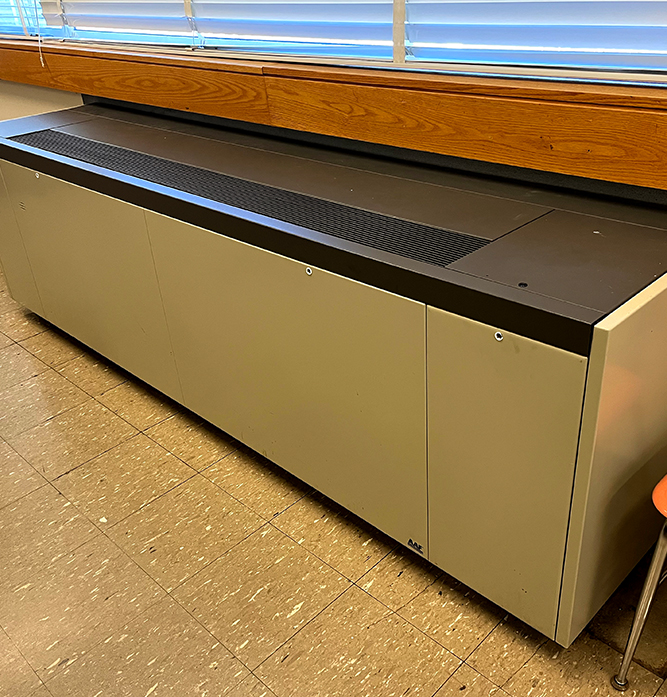Aging HVAC System Disrupts Budget as Well as Student Focus
By Kevin Hayes | Observer Contributor

With an HVAC (heating, ventilation, and air conditioning) system that has sections more than fifty years old, facilities management and students are both quick to acknowledge the daily in-classroom consequences that the current HVAC infrastructure at the Mount presents. In terms of dollars, the financial implications could be staggering. However, there is also a cost for students, inhibiting their potential ability to focus in the classroom, which could put pressure on the college to move sooner rather than later.
According to some students and staff, the inconsistent and uneven temperatures within the Gardner campus result in discomfort. Maddison David, a student at the Mount, said one of her classrooms is very cold. When asked if the temperature difference is distracting, David said, “Not so much distracting, but it makes it harder to focus.” Robert Koch, Assistant Dean of the Collaborative Learning Commons, said it can get so hot that he gets “… very warm very quickly. I would start sweating profusely, and I don’t like to do that, so I dress like it’s summer all the time.”
These temperature distractions pose unique challenges to our facilities management team. Glen Fox, Executive Director of Facilities Management at MWCC, explained that the univents along the perimeter of the building are among the oldest parts of the system. They cost around ten thousand dollars each, and can fail full heat. “Right now, it’s repair over replace.” said Fox, but explained that even repairs can be very labor-intensive. Nonetheless, with the univents nearing their end of life, it’s a project that will have to be done eventually.
Fox notes the desire for facilities to try and make the system as environmentally friendly as possible. It may surprise students to learn that the MWCC Gardner facility uses wood chips in a biomass boiler to assist with heating during the winter months. The project, originally mothballed due to numerous safety concerns, was revived in 2002 when Fox started at MWCC. This year, the boiler will burn around 1,000 tons of wood chips alone. “It’s a lot cheaper than burning oil,” Fox said, adding, “We also have two wind turbines out there that produce so much electricity that some months we’re sending it back.”
According to Energy Star (a public-private partnership dedicated to energy efficiency), colleges and universities typically spend around $1.10 per square foot on electricity and $0.18 per square foot on natural gas. MWCC’s Gardner campus has a square footage of 450,000 feet. If we consider the Mount to be a typical college, that would mean spending a whopping $576,000 per year on energy. Although MWCC doesn’t use natural gas, the Gardner facility spent $620,204 on energy in 2023–a bit more than the 2021 study estimates, but given the increase in energy costs over the past two years it’s safe to say they’re in the ballpark.
When considering the manpower and the expense of replacing parts in the current system, it becomes evident that this may not be cost effective either. Maybe the question is: How long will it take for a new, efficient HVAC system to be in use before it pays for itself with efficiency?
According to Fox, the deferred maintenance budget is $5,000,000 every 5 years. But that includes all maintenance, not just HVAC fixes. Fox said, “The cost to replace the system would be a staggering number. It’s very expensive to replace, and I’m not sure where else we would have to go to get the money. Maybe the Division of Capital Asset Management and Maintenance.” DCAMM is a State agency responsible for capital planning, public building construction, facilities management, and real estate services for the Commonwealth.
When asked if he thought a new system could pay for itself over time, Fox acknowledged that the changes wouldn’t have an immediately beneficial financial impact, but still feels they may be worth the cost.
Although it’s unclear how it could be paid for, one thing is clear: the financial impact is going to leave a scar. Getting it done ASAP may avoid a second scar–the one a student might get when they are concerning themselves over the temperature instead of focusing on what’s being taught in the classroom.
Comments are closed.